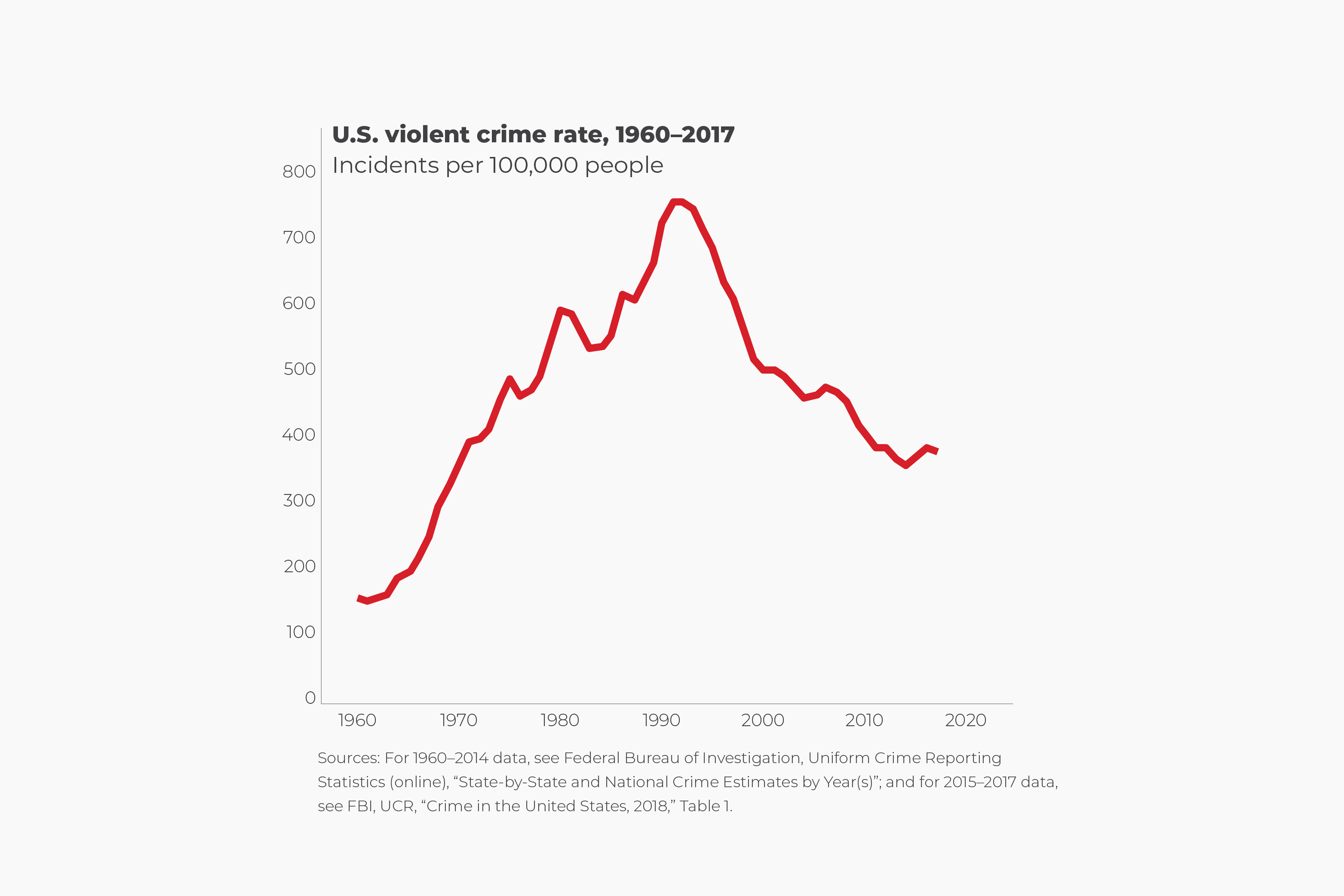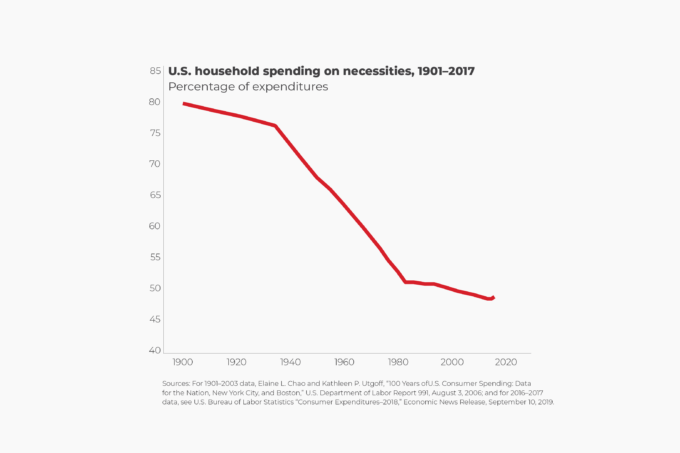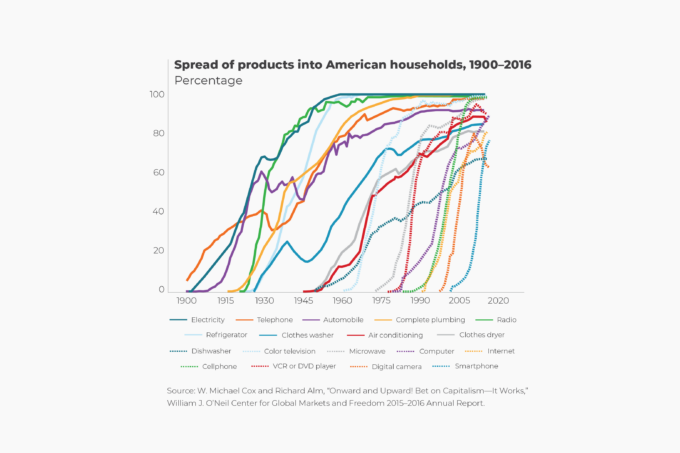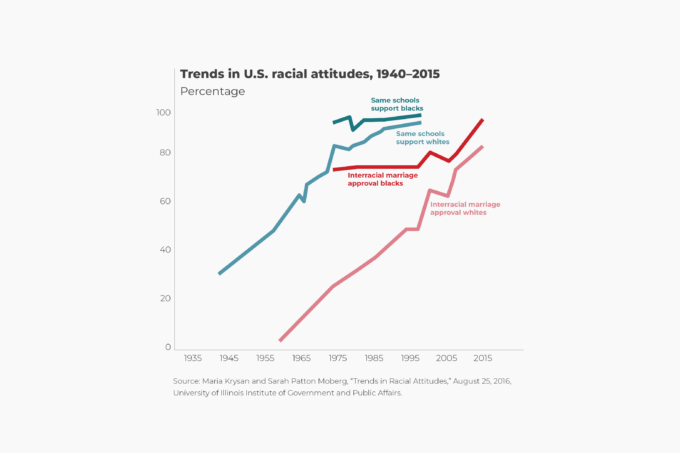A March 2019 Gallup poll reported that 47 percent and 28 percent of Americans, respectively, worried about crime and violence a great deal or a fair amount. In fact, polls found persistently high levels of concern over crime during the past decade, even though violent crime rates have been falling steeply for the past two decades.
The murder rate in the United States rose sharply from about 5 per 100,000 residents in the 1960s to eventually hover at around 9 murders per 100,000 people in the 1970s, where that rate remained for two decades. It started to fall after 1995. In 2017, the FBI reported that the homicide rate was 5.3 per 100,000 residents. The murder rate is now basically back down to the levels experienced in the 1960s.
The violent crime rate—including rape, robbery, and aggravated assault— also escalated rapidly after the 1960s, eventually peaking at 758.2 per 100,000 residents in 1991. In 2018, the violent crime rate was down to 368.9 per 100,000 persons, slightly higher than the rate experienced in 1970. That’s a reduction of about 50 percent.
In Gallup’s 2017 poll, nearly half of respondents said that they believed that immigrants make the crime situation worse. In fact, most studies find that immigrants, both legal and undocumented, commit crimes at a lower rate than do native-born citizens. For example, a 2018 study in the journal Criminology—which examined immigration and crime data from all 50 states between 1990 and 2014— found: “Undocumented immigration does not increase violence. Rather, the relationship between undocumented immigration and violent crime is generally negative.”








